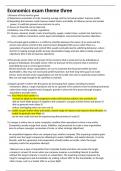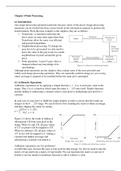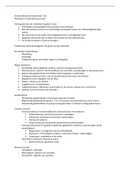Samenvatting
Summary Economics notes unit 3 (summarized whole unit 3) (a level)
- Vak
- Instelling
This is the notes I prepared and used during the whole two years economics a level course, achieved A* in the end of the course The whole document had summarized varies important points and topics in the whole unit 3: Business behaviour and the labour market This helps memorizing each key poi...
[Meer zien]







